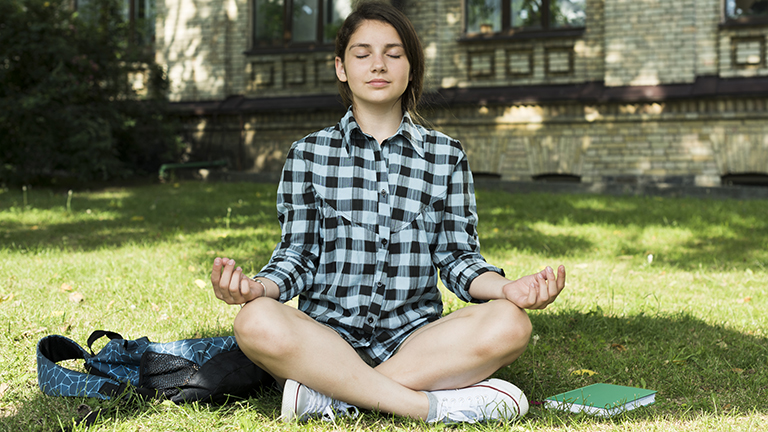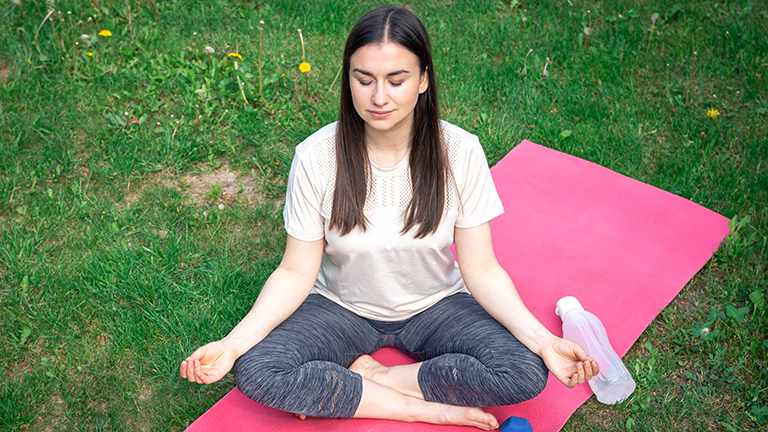Easy Meditation Techniques for Beginners: Meditation is a simple but effective way to relieve stress, enhance concentration and improve overall well-being. If you are just beginning to meditate, this guide will help you learn some simple meditation techniques which might relieve any intimidation you feel about starting. This guide will walk you through some different approaches from mindfulness meditation to guided practices, simple techniques, and even a short practice for each day that offers anyone an opportunity to take a step into meditation practice.
Introduction
Meditation is a vital tool for stress management, focus improvement, and general well-being. For novices, meditating may feel intimidating or impossible. Luckily, simple meditation practices for beginners are easy to integrate daily. This guide will include different types of meditation, mindful meditations, breathing exercises, and tips to build your confidence to meditate.
Benefits of Meditation for Beginners
Meditation provides significant benefits in mental, emotional, and physical health. New practitioners frequently experience the following:
- Decreased Stress: Meditation elicits the parasympathetic nervous system, thus lowering levels of stress hormones.
- Improved Focus and Concentration: Practices of mindfulness improve attention and cognitive function.
- Better Sleep Quality: Regular meditation deepens relaxation ability, and is often helpful in cases of insomnia.
- Emotional Stability: Meditation alleviates mood disturbances and reduces symptoms of anxiety and depression.
- Improved Self-Awareness: Observing one’s thought and feelings allows individuals to recognise their own behaviour and habits.
With repetition, even beginners can expect to experience these remarkable outcomes in a matter of weeks.
Mindfulness Meditation for Beginners
Mindfulness meditation involves being present in the current moment and aware of it, making it one of the easier meditation styles for beginners.
How to do mindfulness meditation step by step:
1. Find a quiet space and sit in a comfortable position with your back straight.
2. If you feel comfortable, close your eyes. If you prefer, you can maintain a soft gaze by looking downward.
3. Take a few deep breaths to relax.
4. Focus your attention on your breathing, noticing the inhalation and exhalation.
5. If your thoughts drift, that’s okay. Gently bring your focus back to your breath.
6. Start with 5–10 minutes each day and add additional time as you feel comfortable.
Mindfulness meditation can also be incorporated into daily life. For example, when you are in the act of eating, walking, or washing the dishes, practice being mindful of every experience and engage yourself viscerally to the aspect of mindfulness meditation.
Guided Meditation Techniques
In guided meditation, you listen to a recording of a meditation or an instructor giving instructions. Guided meditation is a great way to begin to meditate if you want direction and support in your meditative practice.
Advantages of Guided Meditation
- Structure and focus for beginners
- Reduction of stress and anxiety through soothing guidance
- Builds reliability in your practice
How To Do It
- Choose a guided meditation app or YouTube video
- Find a space that is quiet and comfortable
- Follow the instructions as you pay attention to your body, breath, and visualization
- To gain the most benefit, practice daily for 10 – 20 minutes.
Breathing Exercises for Meditation
Breathwork is a basic component of meditation. Breathwork helps calm the nervous system and restore focus while releaving tension and stress.
Common Breath Work
- 4-7-8 Breathing: Inhale for 4 seconds, hold for 7 seconds, and exhale for 8 seconds
- Box Breathing: Inhale for 4 seconds, hold for 4 seconds, exhale for 4 seconds, and hold for 4 seconds.
- Alternate Nostril Breathing: Calms energy and tensions, while reducing anxiety
The above is a simple and easy to do anywhere meditation technique, especially for beginners.
Body Scan Meditation
Body scan meditation promotes body awareness and releases tension. It’s great for novice meditators looking to find relaxation.
How to do a body scan meditation
- Lie down or sit, in a comfortable and quiet setting.
- Close your eyes and take a few deep breaths.
- Begin with your head, focusing your attention on each body part until you reach your toes, while noticing
- sensation, tension, or discomfort, without making any judgments.
- You may spend 1–2 minutes focusing on each body part, and when you are finished, return your focus to your breath.
Daily practice will deepen relaxation and mindfulness for body scan meditation.
Loving-Kindness (Metta) Meditation
Loving-kindness meditation focuses on developing feelings of compassion for oneself and for others. Beginners can limit their sessions to just a few minutes in order to cultivate positive emotions.
Step-by-step instruction:
- Sit in a comfortable position with your eyes closed.
- Start with yourself and repeat the following phrases silently – “May I be happy. May I be healthy.”
- After a few minutes, begin to send this wish to a loved one, an acquaintance and finally, someone you find difficult.
- Conclude your meditation by sending your good wishes out to all beings.
This practice supports one’s emotional well-being and increases feelings of empathy.
Walking Meditation Easy Meditation Techniques for Beginners
Walking meditation merges mindful movement with meditation, and is a perfect fit if you’re someone that’s new to meditating and finds it hard to sit still.
How to Practice
- Find a quiet path or space you can move slowly in.
- Pay attention to the feeling of your feet connecting to the ground.
- Coordinate your breath with your steps.
- Stay aware of the environment while feeling present in every step.
Walking meditation may be the best way to add mindfulness to your everyday routine.
Short 5-Minute Meditation Practices
Short meditation practices are excellent options for busy beginners who would like to experience stress relief and consistency.
Examples of a short practice:
- Spend 5 minutes meditating with your breath.
- Try a 5-minute guided meditation app.
- Practice gratitude meditation and think of three things you are grateful for.
Even simple and short daily practices can enhance your focus, mood, and mental health.
Creating a Meditation Routine
A big component to successful meditation is consistency. As a beginner, you should set an intention and create a routine that works for you.
Tips for Creating a Routine
- Keep it simple: meditate 5-10 minutes every day.
- Choose a regular time of day to meditate, such as in the morning or before bed.
- Find a quiet place to meditate with little distractions.
- Log your progress in a journal or app.
- Don’t be too hard on yourself. Be patient and kind with yourself.
Tools and Resources for Beginners
Apps for Meditation
- Headspace
- Calm
- Insight Timer
- Simple Habit
Music & Sound
- Sounds of nature to help you relax
- Soft instrumental music
- Binaural beats to help you focus
Journaling
Keeping a meditation journal can help record your experiences, insights, and struggles and may help motivate you to keep going.
Overcoming Challenges
Common Issues for Beginners
- Difficulty focusing or feeling restless
- Frustration (or impatience)
- Practice inconsistently
- Recommendations
Start with shorter amounts of time
- Listen to some guided meditations.
- Practice mindfulness when doing every day activities.
- Join a meditation group/community for accountability and support.
Expert Insights Easy Meditation Techniques for Beginners
Research experts stress that even people new to meditation can find evidence of boost to their mental health around the globe.
- Jon Kabat-Zinn, PhD: Mindfulness meditation can help reduce stress and improve well-being.
- Clinical Psychologists: Engaging in daily meditation for even short sessions can decrease anxiety and depression.
- Neuroscience: Brain function, attention and emotional regulation is enhanced by meditation.
- Research studies around the globe show evidence that meditation reduces stress and enhances mental health to diverse populations across the US, UK, Canada, etc.
Conclusion Easy Meditation Techniques for Beginners
Finding easy meditation practices is a meaningful way to support your mental, emotional, and bodily well-being. Topical mindfulness awareness, guided meditation, breath practices, and other forms of easy practice can reduce stress, focus your attention, and bring ease and peace into your life. Be patient with yourself. Be purposeful in your practice. And as you learn, experiment with individualised practices that suit you. Your journey of meditation is just yours, and every time you do it, it will benefit you for your entire lifetime.


